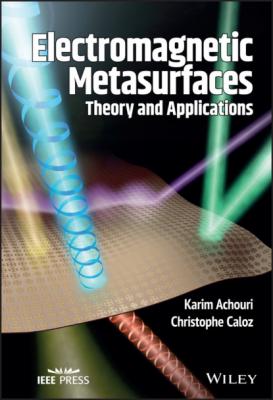Electromagnetic Metasurfaces. Christophe Caloz
Читать онлайн.| Название | Electromagnetic Metasurfaces |
|---|---|
| Автор произведения | Christophe Caloz |
| Жанр | Физика |
| Серия | |
| Издательство | Физика |
| Год выпуска | 0 |
| isbn | 9781119525172 |
Throughout the book, we will adopt a particular naming convention to better describe the type of medium we will be dealing with. A medium with
Figure 2.1 Classification of (bianisotropic) metamaterials in terms of their space–time variance and dispersion. The I- and D-notations refer to the inverse and direct space/time domains.
2.2 Temporal Dispersion
Temporal dispersion is the property according to which the response of a medium, at a given instant of time, depends on the excitation at previous times. This can be mathematically expressed by the time-domain counterparts3 of (2.3), as
(2.5a)
(2.5b)
where only the time dependence of the fields is explicitly mentioned and the spatial dependence is omitted for conciseness. These expressions indicate that the material responses,
(2.6a)
(2.6b)
Since the convolution in the time domain corresponds to the multiplication in the frequency domain, the time-domain Fourier transform of (2.6) corresponds to (2.3).
2.2.1 Causality and Kramers–Kronig Relations
We have mentioned that matter is temporally dispersive and shown that the corresponding medium parameters at a given instant of time depend on the excitation at previous times. Combining these facts with the concept of causality allows one to relate the real and imaginary parts of the material parameters to each other. The corresponding relations are referred to as the Kramers–Kronig relations. Given their crucial importance and given their unclear presentation in the literature, we shall now precisely derive them.
The fundamental tenet of causality is that an effect cannot precede its cause, so that, in particular, matter cannot respond before being excited. Therefore, assuming that a medium starts to be excited at
